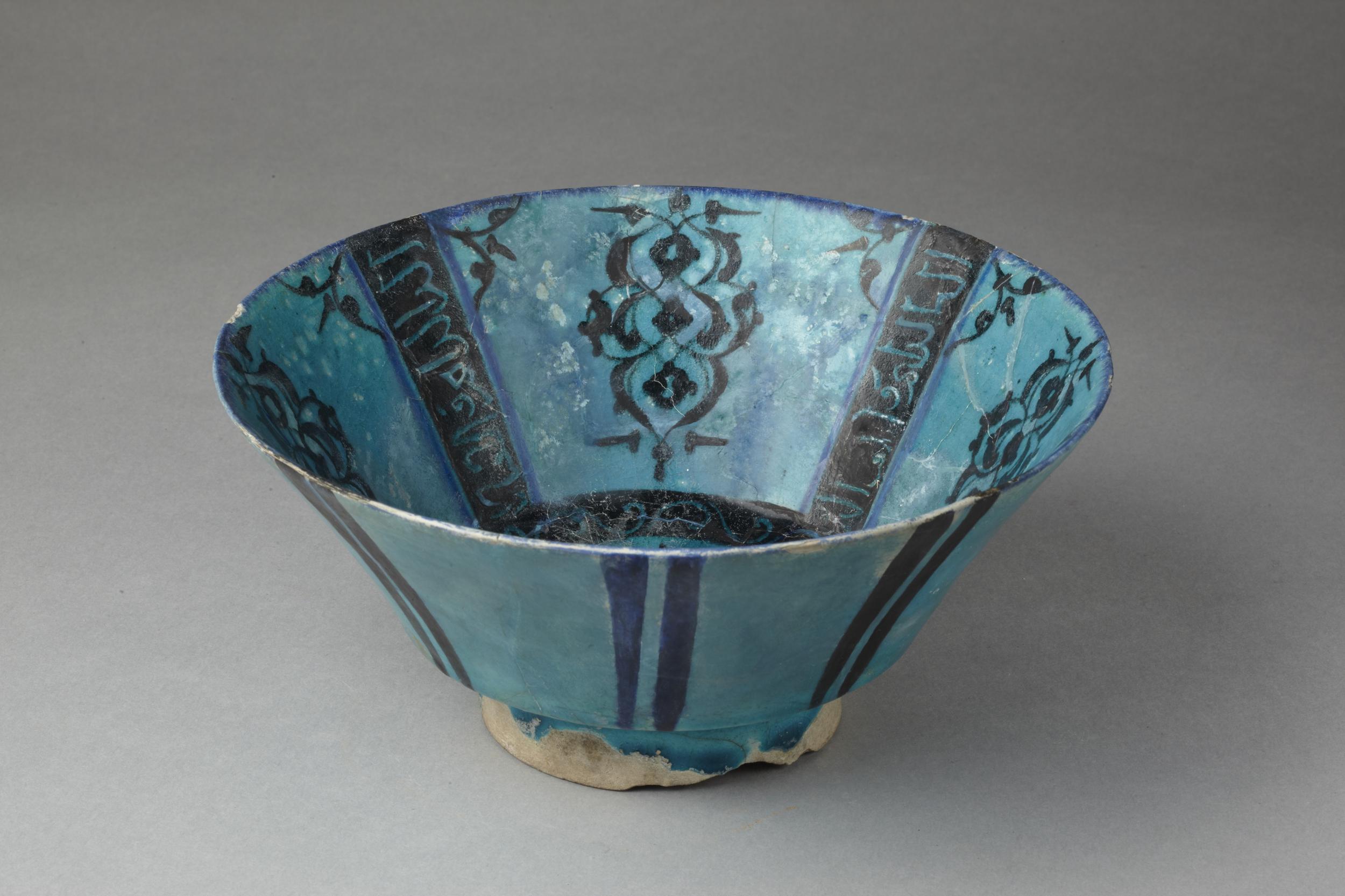Following the advice of Rachel Barclay from the Oriental Museum in Durham I explored the Metropolitan Museum's archive of essays relating to Persian Pottery to find more information about the art form as well as the V&A's collection of Persian Pottery.

Source
From a quick search of the V&A museum, it was immediately clear how much Henry Van den Bergh has contributed to their collection. This bowl pictured above is part of a series of objects that were donated by Henry Van den Bergh in his will to the V&A in 1947. c.36-39-1947. Among his Persian pottery collection he also donated 6 ceramics objects to the British Museum and 7 objects to the National Art Collection Fund. As a comparison piece, this bowl was incredibly interesting to look at. It is also made from fritware, with carved and underglaze painted decoration, Iran (Kashan), late 12th to early 13th century. This will be covered further in my comparison post with other Persian pottery from a similar time.
I have split the following research into three posts:
Calligraphy in Islamic Art
Geometry in Islamic Art
Vegetational imagery in Islamic Art
I have also just received feedback on my Research Proposal, and along with it Dr Parton has added some interesting questions add to my research. I will be attempting to answer these in the next couple of weeks and am excited to see where my research takes me.
Questions raised by this new information, and steps to take from here:
1. What was the function of the bowl or to what market was it aimed?
2. To what extent are the other 8 ceramics related to your chosen object? It is a good idea to see if you can find comparative objects - have you found any useful or similar pieces as yet?
3. As regards the calligraphy, can you find an expert or a Persian speaker who might be able to read it and translate it? This may help illuminate the function of the bowl.

Source
From a quick search of the V&A museum, it was immediately clear how much Henry Van den Bergh has contributed to their collection. This bowl pictured above is part of a series of objects that were donated by Henry Van den Bergh in his will to the V&A in 1947. c.36-39-1947. Among his Persian pottery collection he also donated 6 ceramics objects to the British Museum and 7 objects to the National Art Collection Fund. As a comparison piece, this bowl was incredibly interesting to look at. It is also made from fritware, with carved and underglaze painted decoration, Iran (Kashan), late 12th to early 13th century. This will be covered further in my comparison post with other Persian pottery from a similar time.
I have split the following research into three posts:
Calligraphy in Islamic Art
Geometry in Islamic Art
Vegetational imagery in Islamic Art
I have also just received feedback on my Research Proposal, and along with it Dr Parton has added some interesting questions add to my research. I will be attempting to answer these in the next couple of weeks and am excited to see where my research takes me.
Questions raised by this new information, and steps to take from here:
1. What was the function of the bowl or to what market was it aimed?
2. To what extent are the other 8 ceramics related to your chosen object? It is a good idea to see if you can find comparative objects - have you found any useful or similar pieces as yet?
3. As regards the calligraphy, can you find an expert or a Persian speaker who might be able to read it and translate it? This may help illuminate the function of the bowl.





